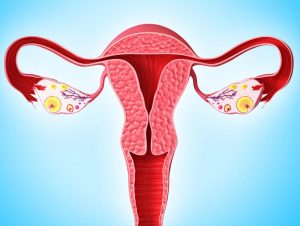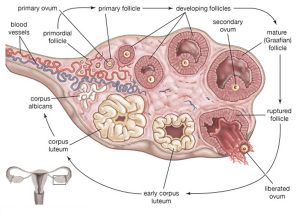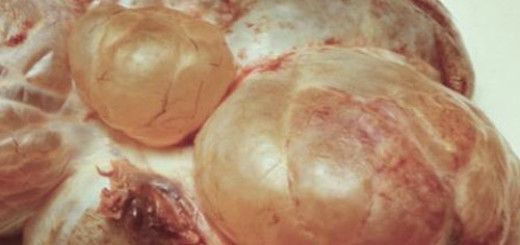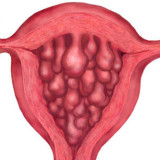The menstrual cycle physiology is so complex that the course of this process associated with the development of the ovule ready for fertilization, is often difficult to fully understand. During the cycle, there are various changes in the concentration of sex hormones, changes in the thickness of the endometrium, as well as the formation of a temporary gland in the ovary, which is corpus luteum.
Corpus luteum is a temporary gland, the main task of which is the progesterone production. Thus, it affects the development of the fertilized ovule, it is also necessary for the subsequent preservation of pregnancy. However, corpus luteum does not function properly in all women. This is an important issue because the dysfunction of this gland can lead to problems with pregnancy and miscarriage.
Corpus luteum is an endocrine gland that produces several types of hormones that are important for the proper course of the fertilization process and the subsequent course of pregnancy. The gland was named not by chance, it really has a yellowish color. This is due to the fact that it contains a lot of carotenoids (especially it has a lot of lutein).
With each menstrual cycle, a new corpus luteum is formed. This occurs after ovulation (release of the ovule). It arises from the remaining tissue of the torn follicle and reaches significant sizes. It can reach even 2-5 cm, and eventually corpus luteum can occupy 1/3, sometimes even ½ of the entire ovary volume.
Corpus luteum function
As it has been mentioned, corpus luteum produces several different hormones, the most important of which is progesterone. Hormones secreted by the gland after fertilization affect the mucous of the uterus (endometrium). The hormones stimulate its thickening, and also improve blood supply in it. All it is necessary for the fertilized ovule to develop in the lining of the uterus.
However, progesterone is necessary not only at the beginning of pregnancy, but also later, during the entire intrauterine development of the child. And progesterone secretion is not the only corpus luteum function. This gland, although in much smaller quantities, also produces other hormones. This, for example, inhibin that reduces the secretion of pituitary FSH, or follicle stimulating hormone. No less important is relaxin hormone. It is responsible for relaxing the structures of the pubic symphysis during childbirth.
What happens to corpus luteum if the ovule is not fertilized?
Corpus luteum is formed when the ovule comes out of the ovary. In a situation where fertilization has not occurred, the gland also produces the hormones mentioned above, but only up to a certain time. After about 9 -10 days of ovulation, the gland begins to decrease in size. It turns into scar tissue and changes its color becoming the whitish body.
In the endometrium, under the influence of the gland and the progesterone produced by it, there are processes similar to those described above. The mucous membrane of the uterus thickens and is abundantly supplied with blood. After the gland has disappeared there is a sudden, significant decreasing in the progesterone level. As a result, the endometrium exfoliates and menstruation begins.
With the next cycle, the whole process is repeated. After ovulation, a new corpus luteum is formed, it produces its hormones and, if it is not fertilized, the gland disappears.
What happens when corpus luteum does not function properly?
The gland does not always perform its function correctly. The problems associated with its activity are called corpus luteum insufficiency, you can also find the term “luteal phase defect”.
This type of disorder can manifest itself in a variety of ways. Thus, patients may have very long or very short menstrual cycles, or there appear additional ones. Impaired corpus luteum function can also cause pregnancy problems and can lead to miscarriages.
What are the causes of corpus luteum dysfunction?
The list of problems that can lead to improper functioning of the corpus luteum is quite long. Among potential causes of this condition can be mentioned:
- pathalogical body weight (both too much and too little),
- endometriosis,
- hyperprolactinemia,
- chronic stress,
- polycystic ovaary syndrome (PCOS),
- thyroid dysfunction (both in the form of hyperthyroidism and hypothyroidism).
What treatment is used for the improper functioning of corpus luteum?
Usually, problems with corpus luteum disorders arise due to the lack of the luteum progesterone production. For this reason, the use of progestogen drugs may be offered to patients having the gland failure. Taking these hormones in the second half of the cycle can increase the chances of fertilization.
It is worth noting that before starting treatment, you must first find out what led to the failure of the corpus luteum in the patient. In fact, the treatment of the causes of this condition – for example, hyperprolactinemia or thyroid dysfunction – can lead to the elimination of the luteal phase defect, the disappearance of intermenstrual blood flow, pregnancy problems.














